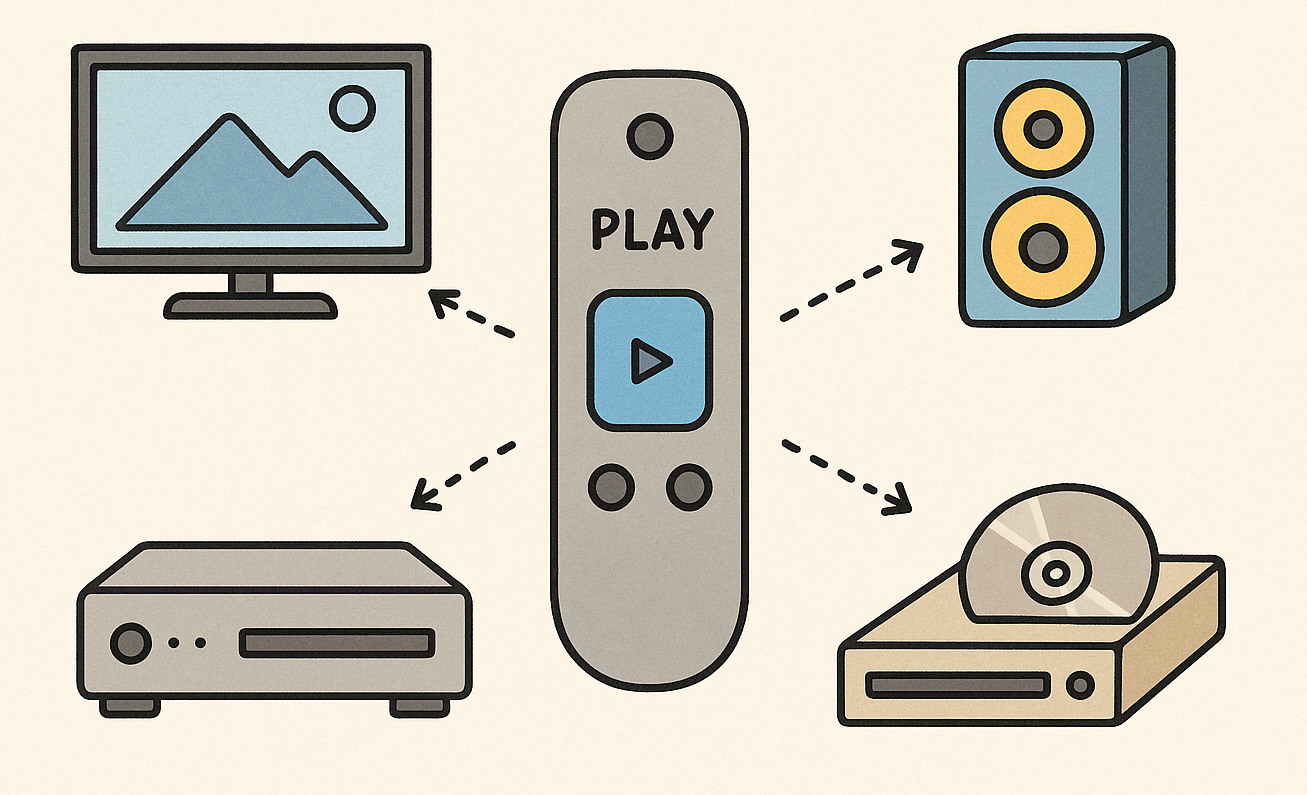What is polymorphism and why should you even care about it?
Sure, it’s a question you might get asked at an interview, but understanding polymorphism (in its many forms) gives us a great insight into how programming languages have evolved and continue to evolve.
And knowing about different types of polymorphism gives you new ways and approaches to designing and writing code.

What is polymorphism?
A general definition could be:
“One operation, many types”
Where:
- An operation could mean: a function, a method or an interface.
- A type could be a primitive type, an interface or an object type.
So polymorphism is the mechanism that allows a single bit of code (a coding operation) to work with many different types.
Different types of Polymorphism
In this post, I’ll cover:
- None (no native polymorphism in the language)
- Ad-hoc polymorphism (Overloading)
- Subtype polymorphism (OOP)
- Parametric polymorphism (Generics)
- Structural polymorphism
- Row polymorphism

None - No Native Polymorphism
In the earlier days of computing, popular languages such as C and Pascal had no support for polymorphism.
So you’d end up having to write code like:
// Separate function for adding integers int add_int(int a, int b) { return a + b; } // Separate function for adding floats float add_float(float a, float b) { return a + b; }Every time you needed an algorithm to work with a different data type, you’d need to write a new function and give it a different name.
That’s pretty laborious, and code duplication can be a source of errors.
Note: with the use of pointers you can indeed create polymorphism in languages such as C and Pascal, just as you could create OOP. But the languages themselves don’t have native support for polymorphism.

Ad-hoc Polymorphism (Overloading)
Ad-hoc polymorphism is where functions with the same name can behave differently based on the types of their arguments.
Some approaches to ad-hoc polymorphism are:
- Function Overloading
- Interfaces/Traits/Protocols (eg Java Interfaces, Rust Traits, Swift Protocols)
- Type Classes (eg Haskell)
Function Overloading
Function overloading is a simple form of ad-hoc polymorphism.
It is where functions with the same name can handle different parameter types.
ALGOL 58/60 supported this way back in 1959.
Of course, modern languages support this too. Here is some C++ code showing ad-hoc polymorphism via function overloading:
// Overloaded function for adding two integers int add(int a, int b) { return a + b; } // Overloaded function for adding two floats float add(float a, float b) { return a + b; } // Overloaded function for concatenating two strings std::string add(const std::string& a, const std::string& b) { return a + b; } int main() { int int_result = add(3,5); float float_result = add(3.5f, 5.2f); std::string str_result = add(std::string("Hello, "), std::string("World!")); }Unlike the C code, we can use a single name add for functions that handle different types. The compiler determines which version of add to call based on the argument types at compile time.
Note:
In ad-hoc polymorphism each function could have a completely different implementation or algorithm.
This is one way in which ad-hoc polymorphism differs from parametric polymorphism.
We’ll see later, how in parametric polymorphism one implementation/algorithm is used to work with many different types.
Some modern languages combine both approaches for maximum flexibility and type safety.

Interfaces/Traits/Protocols
Interfaces, traits, and protocols are a common and powerful form of ad-hoc polymorphism found in many modern programming languages.
They let you define shared behaviour as a contract that types can choose to implement.
This form of polymorphism is explicit. Types must opt in by conforming to the interface/trait/protocol (in Java/Rust/Swift respectively).
Here is an example in Swift:
protocol Drawable { func draw() } extension String: Drawable { func draw() { print("Draw the string \"\(self)\" in cool way..") } } struct Owl: Drawable { func draw() { print("Draw the owl...") } } func render(_ shape: Drawable) { shape.draw() } render(Owl()) render("Hello world")
Type Classes
Type classes are a powerful form of ad-hoc polymorphism. They let you define functions that work over different types but only if those types implement certain behaviour.
Unlike subtype polymorphism (e.g., in OOP), where types share a common parent, type classes define behaviour independently of a type hierarchy.
Let’s use a simple example in Haskell to illustrate:
-- Define a type class Printable with one method: printIt class Printable a where printIt :: a -> String -- Provide a Printable instance for Int instance Printable Int where printIt x = "Int: " ++ show x -- Provide a Printable instance for Bool instance Printable Bool where printIt True = "Yes" printIt False = "No" -- Define a custom data type data Person = Person { name :: String, age :: Int } -- Provide a Printable instance for Person instance Printable Person where printIt (Person n a) = "Person: " ++ n ++ ", Age: " ++ show a -- A generic function that prints any list of Printable values printAll :: Printable a => [a] -> [String] printAll = map printIt main :: IO () main = do -- Some example values let ints = [1, 2, 3] bools = [True, False, True] people = [Person "Alice" 30, Person "Bob" 25] -- Print Ints putStrLn "Printing Ints:" mapM_ putStrLn (printAll ints) -- Print Bools putStrLn "\nPrinting Bools:" mapM_ putStrLn (printAll bools) -- Print custom Person values putStrLn "\nPrinting People:" mapM_ putStrLn (printAll people)Haskell’s type classes are like Swift protocols or Rust traits, but with a more powerful form of retroactive modelling and a purely static dispatch model baked into the type system.
Note: We won’t be going into the various forms of dispatch in this blog post, but it’s something I will cover in a follow up.

Subtype Polymorphism (OOP)

The language Simula 67 introduced object-oriented programming, and subtype polymorphism. This idea was taken up by languages like Smalltalk, C++ and many more.
Subtype polymorphism allows a base type to refer to derived types, with behaviour determined at runtime.
So using a classic OOP example, we could have a Shape class with a method draw().
Subtypes of Shape (such as Circle or Square) can be used anywhere a Shape is expected. When draw() is called on those objects, the correct implementation will be executed.
Here's some Java code demonstrating subtype polymorphism:
// Base class abstract class Shape { // Abstract method to be implemented by subclasses public abstract void draw(); } // Subclasses class Circle extends Shape { private int radius; @Override public void draw() { System.out.println("Drawing a circle with radius " + radius); } } class Square extends Shape { private int side; @Override public void draw() { System.out.println("Drawing a square of side " + side); } } // Using the classes polymorphically public class ShapeDemo { public static void main(String[] args) { Shape[] shapes = new Shape[2]; shapes[0] = new Circle(5); shapes[1] = new Square(4); // Polymorphic behavior - correct method is called based on actual object type for (Shape shape : shapes) { shape.draw(); } } }
Parametric Polymorphism (Generics)
Parametric polymorphism allows you to write code that works:
- with any type (unconstrained generics)
- with types that fit certain requirements (constrained generics)
Templates in C++ in the 1990s brought parametric polymorphism to the mainstream. But it is currently widely supported by languages such as Java, C#, Rust, Kotlin and Swift.
Implementation Approaches: True Parametric Polymorphism vs. Static Monomorphism
It's worth noting that there are different implementation approaches to parametric polymorphism across languages:
-
True Parametric Polymorphism: In functional languages like OCaml, Haskell, and ML, a single polymorphic function value can work with multiple types at runtime. For example:
(* OCaml example of true parametric polymorphism *) let id x = x (* A single polymorphic function value *) (* These both use the same function value *) let a = id 5 (* Works with int *) let b = id "hello" (* Works with string *) -
Static Monomorphism: In languages like C++ (with templates) and Rust, the compiler often creates separate specialized versions of the generic code for each type it's used with. This is a process called monomorphization. This means the "generic" function is actually compiled into multiple concrete implementations:
fn id<T>(x: T) -> T { x } fn main() { let a = id(5); let b = id("hello"); }
While both approaches provide type-safe generic programming, true parametric polymorphism can be more memory-efficient (one function instead of many) but may have different runtime performance characteristics.
We'll be using Swift in our examples for parametric polymorphism, which generally follows a hybrid approach.
Unconstrained Generics
func printType<T>(_ value: T) { print("The value \(value) has type \(type(of: value))") } printType(10) printType("Strawberry")The above function (in Swift) works with any type.
Constrained Generics
Suppose you want to write a single bit of code that compares two values and returns the largest value: a max() function.
Such an operation only makes sense for types that can be compared. It would make no sense to use the code with types that cannot be meaningfully compared.
Here is what it would look like in Swift:
func max<T: Comparable>(_ a: T, _ b: T) -> T { return a > b ? a : b } let maxInt = max(10, 20) let maxDouble = max(10.1, 20.2)In the Swift code, the T acts as a placeholder for any type that conforms to the Comparable protocol.
This conformance means the compiler will prevent you from using types that can’t be compared.

Structural polymorphism
In Structural polymorphism you can write code that works with any type as long as it has the right “shape” or structure (think: presence of properties or methods) - even if it doesn’t explicitly declare that it conforms to a particular interface.
Structural Polymorphism in Go
Go (2009) can be considered the first popular/mainstream programming language that supports structural polymorphism.
Let’s take the classic subtype polymorphism example (OOP) and implement it in Go, using structural polymorphism instead:
type Circle struct { Radius float64 } func (c Circle) Draw() { fmt.Println("Drawing a circle with radius", c.Radius) } type Square struct { Side float64 } func (s Square) Draw() { fmt.Println("Drawing a square with side", s.Side) } type Shape interface { Draw() } func render(s Shape) { s.Draw() } func main() { c := Circle{Radius: 3} r := Rectangle{Width: 4, Height: 2} render(c) render(r) }The above code achieves the same affect as the example from the Subtype polymorphism section. The appropriate version of Draw() is called for each variable.
Notice though, that with Go’s structural polymorphism, neither the Square or Circle type explicitly conforms to the Shape interface.
Instead, with structural polymorphism, it is enough that both those types have the correct structure (in this case, they both have a Draw() method) to implicitly conform to the Shape interface.
Typescript is another contemporary programming language that supports Structural Polymorphism.
Differences to Duck Typing
The term “Duck typing” comes from dynamic languages such as Ruby and Python. Both duck typing and structural typing are about what a type can do (its structure and/or behaviour) rather than what is says it is (its type or interface).
But there is a big difference between them.
Structural polymorphism is statically checked at compile time. The compiler will give you an error if a type doesn’t have the right structure.
Duck Typing - coming from dynamic languages - is dynamically checked at runtime. If you try to use a method or property that doesn’t exist, the result will be a runtime error.

Row Polymorphism
Row polymorphism is popular in functional programming languages like Haskell, OCaml, and PureScript. It is still somewhat niche but perhaps shows where mainstream programming languages will be heading next.
It’s similar to structural polymorphism, but is more flexible.
Row polymorphism allows functions to operate on records (similar to objects or structs) that have at least the fields the function requires, but can also have additional fields.
This is different to structural polymorphism, which requires structures to match exactly or fit a subset. Additional fields are not supported.
Row polymorphism uses type variables to represent any extra fields (the "row"), which allows for generic, type-safe code without needing to explicitly define every field.
For example, PureScript’s row polymorphism allows us to write a function that works on any record containing at least a name field, while preserving additional fields in a type-safe way.
module Main where import Prelude import Effect (Effect) import Effect.Console (logShow) -- Define a function that processes a record with at least a `name` field -- The `r` represents the "rest" of the row, which can contain arbitrary fields processRecord :: forall r. { name :: String | r } -> { name :: String, processed :: Boolean | r } processRecord rec = { name: rec.name, processed: true | rec } -- Example usage main :: Effect Unit main = do let rec1 = { name: "Alice" } rec2 = { name: "Bob", age: 30, city: "New York" } logShow $ processRecord rec1 -- { name: "Alice", processed: true } logShow $ processRecord rec2 -- { name: "Bob", processed: true, age: 30, city: "New York" }In the above code:
- The type { name :: String | r } is a row type, where r is a type variable representing any additional fields (the "row" of other fields).
- The | r syntax means the record can have more fields beyond what was specified (name in this case).
- The function processRecord takes a record with at least a name field and returns a new record with the name field, a new processed field, and all fields from r (the extra fields) preserved.
- This works for rec1 (which has only name) and rec2 (which has name, age, and city). The type system ensures that the extra fields (age, city) are carried over unchanged.
Advantage: The function is generic over the additional fields (r), and the type system tracks them automatically. This cannot be replicated with structural typing.
This allows for flexible APIs that can work with different record shapes while maintaining type safety.

Conclusion
In this article we have:
- defined broadly what polymorphism is (“One operation, many types”)
- explored the various forms of polymorphism that are supported by different programming languages
Hopefully this post gives you a broad understanding of the different forms of polymorphism, how they compare with each other, and a sense of how polymorphism is a key pillar of programming language evolution.
Ultimately we want to be able to:
- do more with less code (write less code)
- have code be widely reusable
- have the code we do write be as correct as possible
Polymorphism aims to address these three goals.

Revisions
- v1.2: Updated the “Parametric Polymorphism” section to cover Static Monomorphism.
- v1.1: Updated the “Ad-hoc Polymorphism” section to cover Interfaces/Protocols/Traits and Type Classes.
- v1: original
.png)



